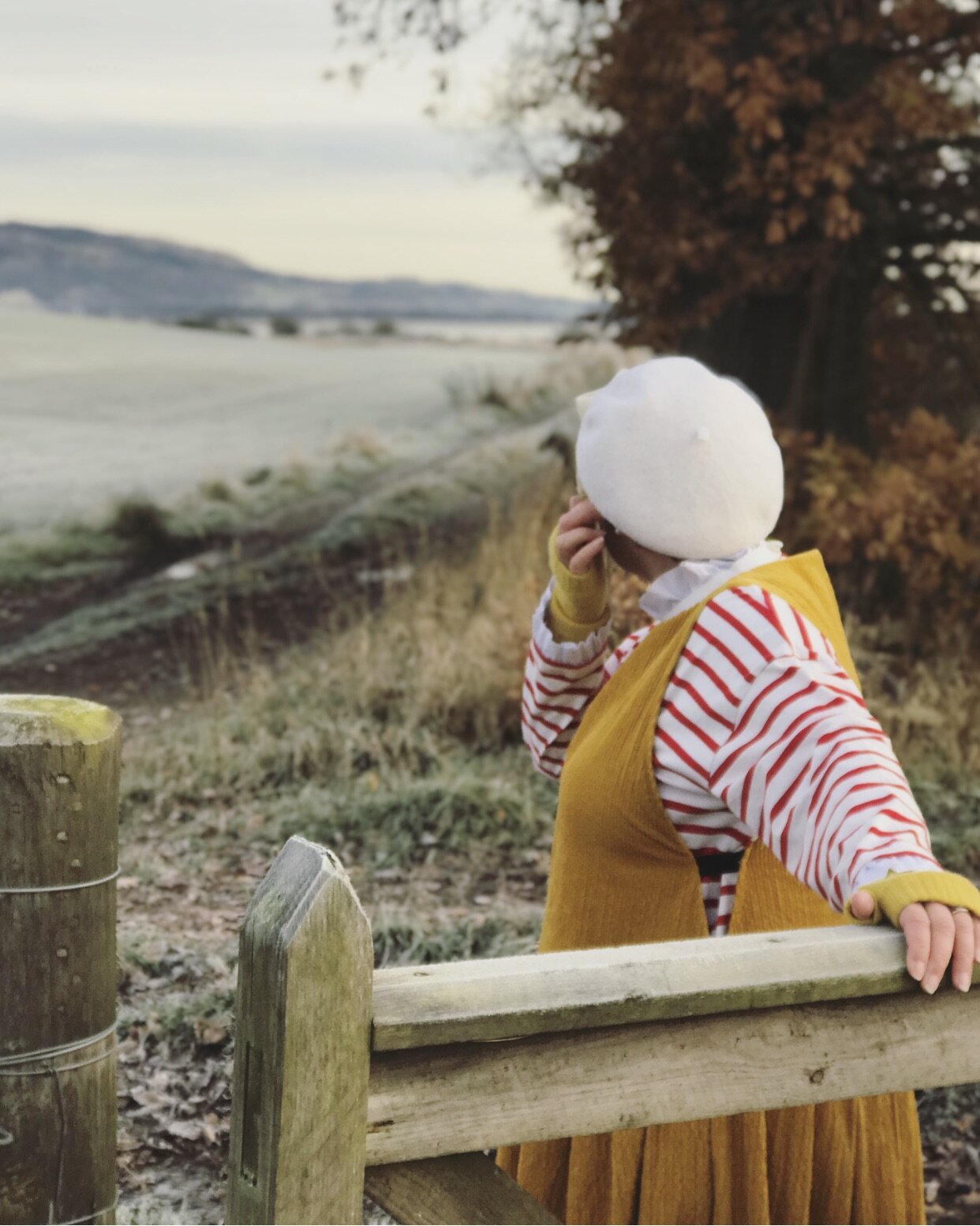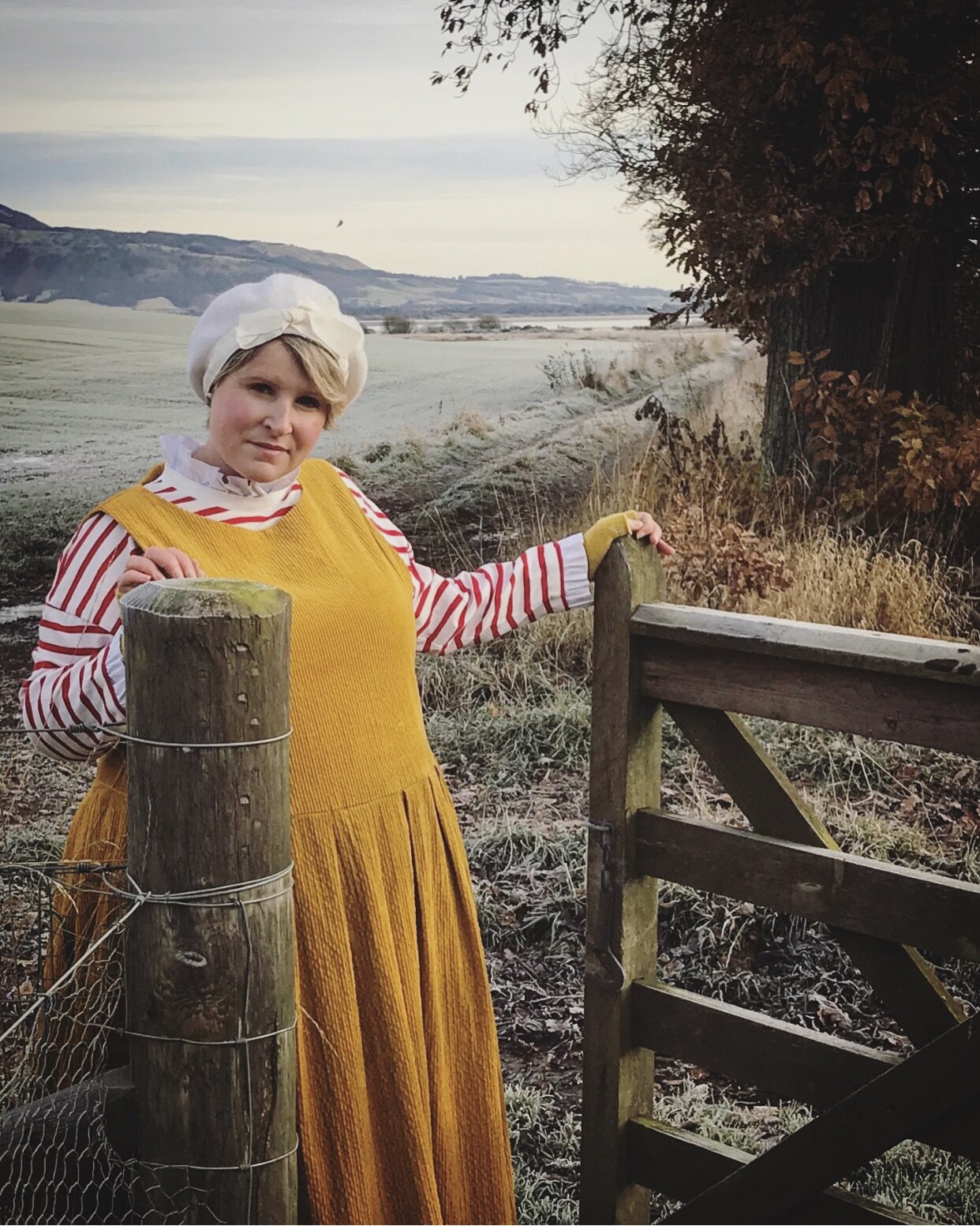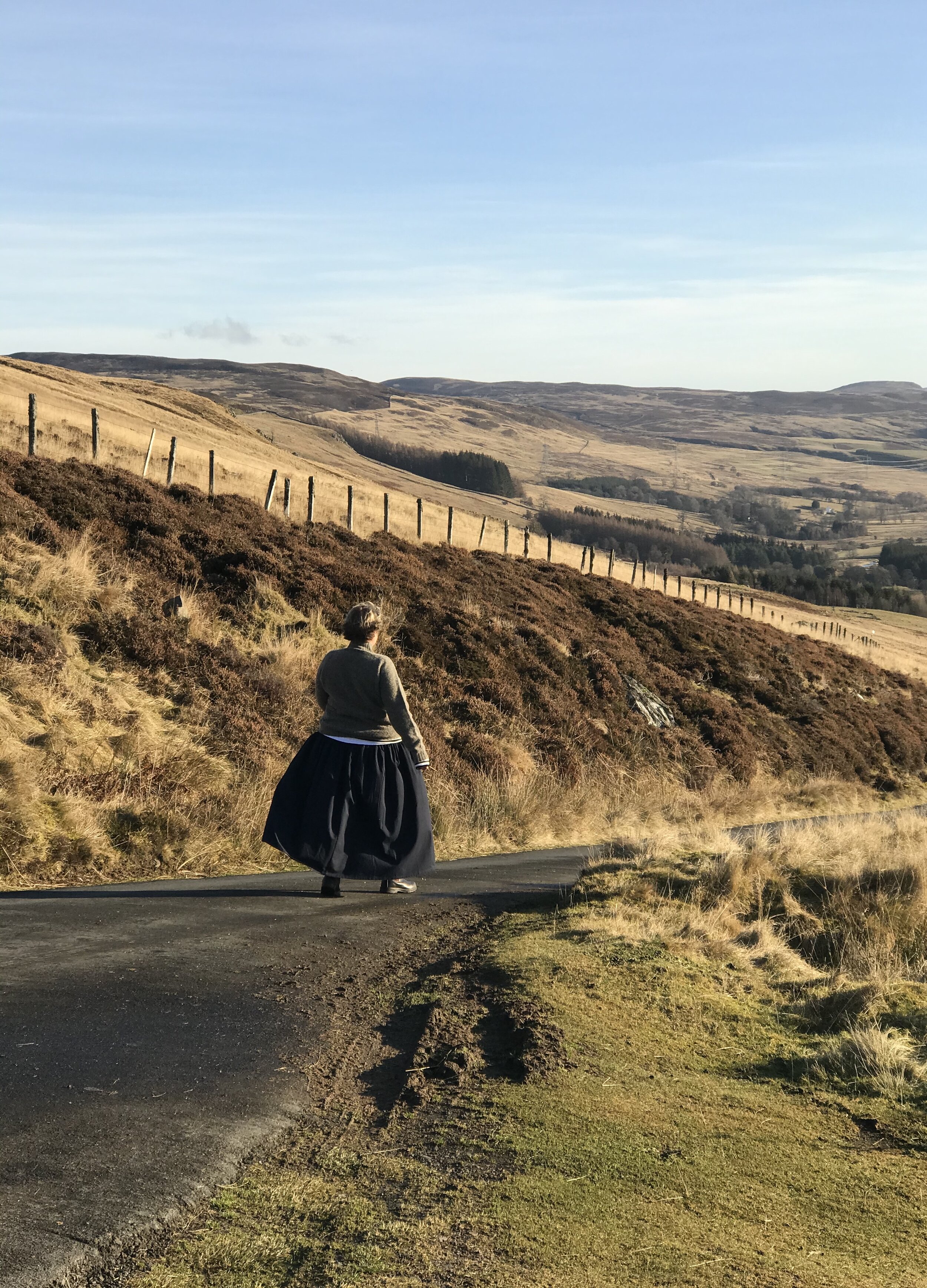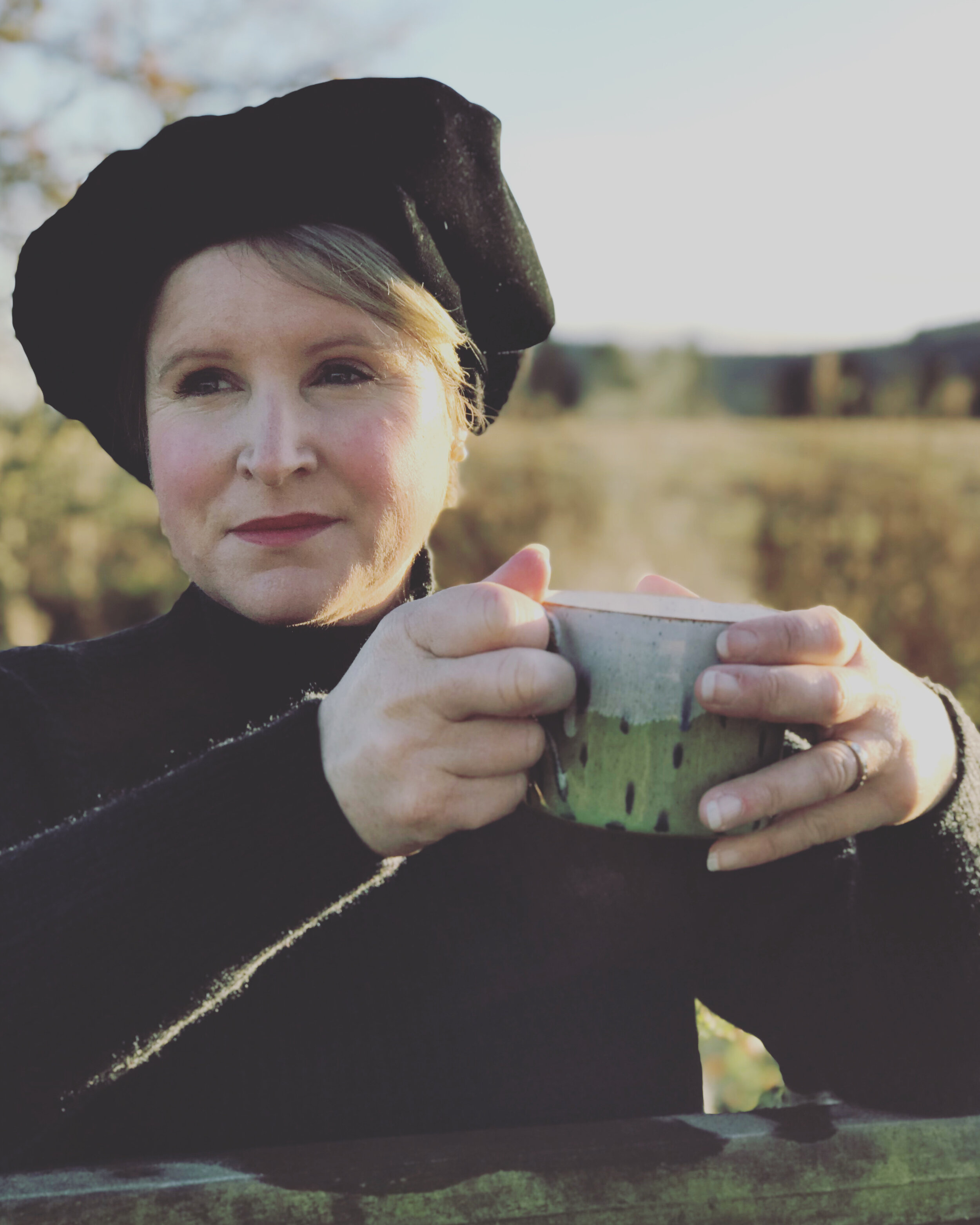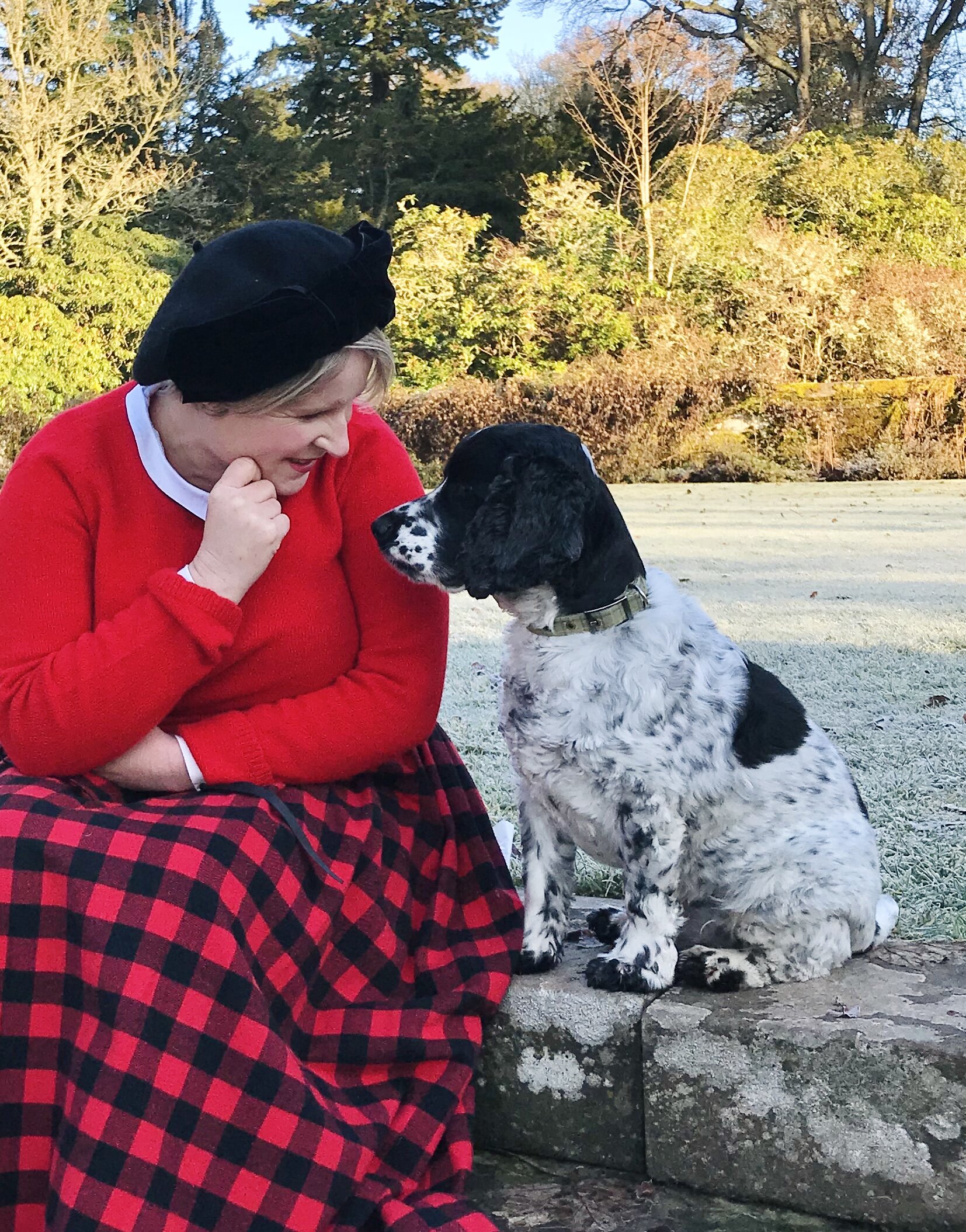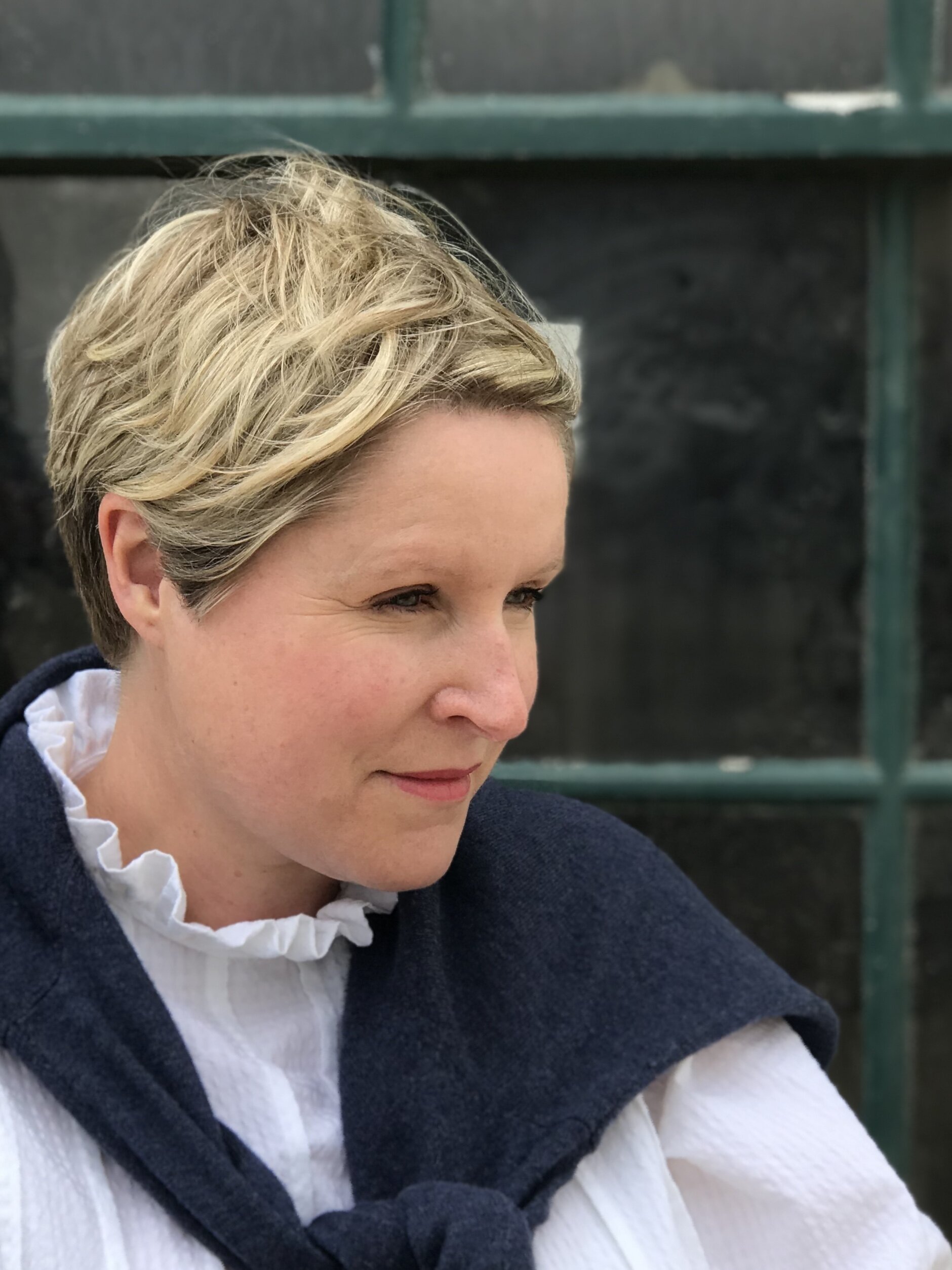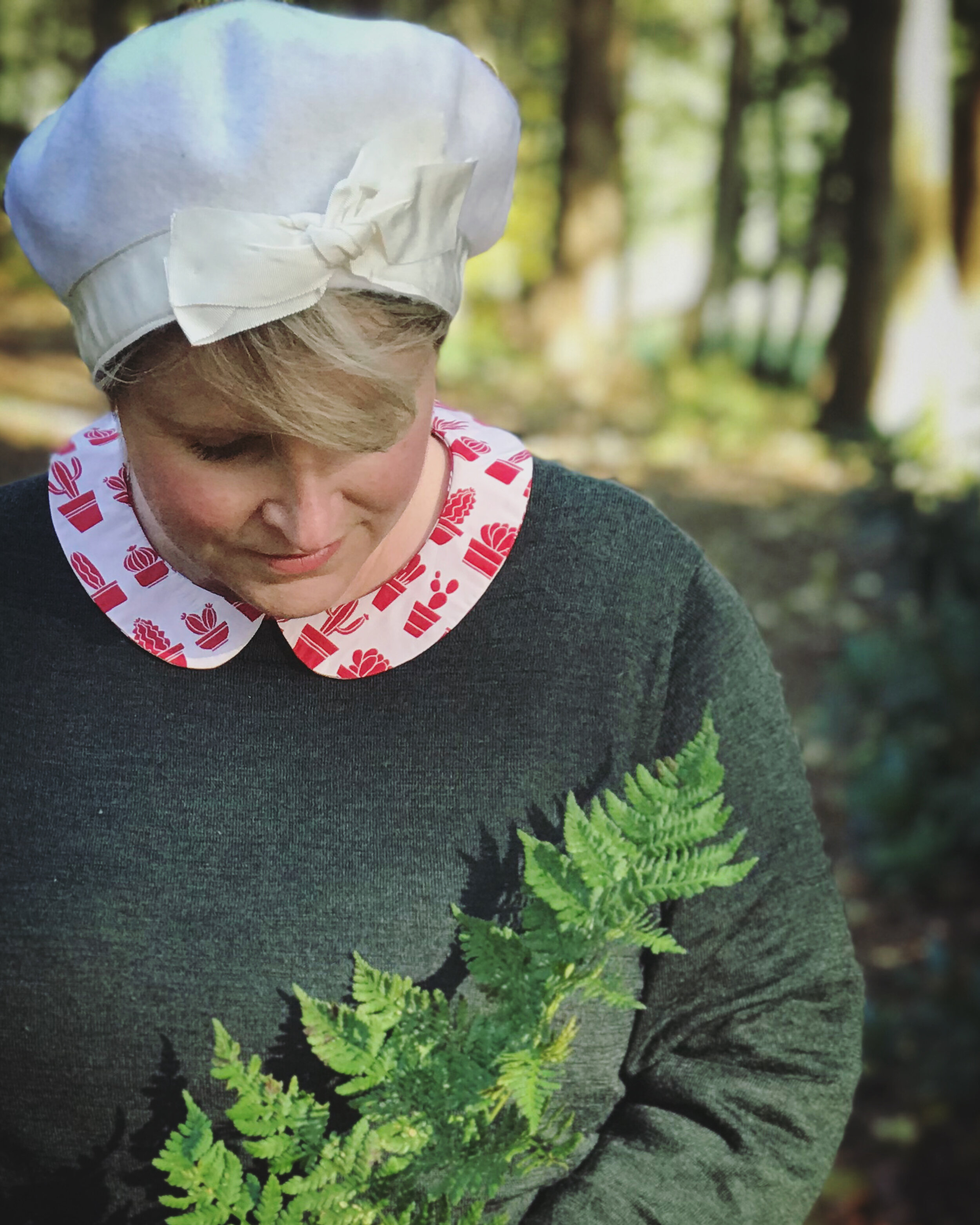Our Daily Thread
My Scottish grandmother had died. This may seem like the saddest start to a blog but stay with me because what I’m about to tell you changed my life in a way I could never have imagined. After three years of living without my grandfather, the love of her life, she gave up on her own life and gently slipped away to be with him. To try and describe my grandmother to you is almost an impossible task. She seemed to occupy a world that nestled somewhere between the everyday and a place of her own invention. If as a child someone had told me she’d had magical powers I would have believed them wholeheartedly because wherever she was, the very essence of her drew you in. Although her feet were firmly on the ground, we all seemed to orbit around her; her warmth, humour and goodness lighting our paths ever inwards. I could tell you lots of insignificant facts. I could tell you that she made the best porridge you would ever taste, or that she could recite any quote from Shakespeare. I could tell you that she once auditioned for The Royal Ballet and would have been accepted had she not been too tall in her blocks. But the thing I remember the most was her sense of style. She had that timeless, sophisticated elegance. Cashmere cardigans over her shoulders, belts cinching in her tiny waist, scarves tied artistically around her neck, brooches pinned to her jacket lapel, she knew how to elevate an outfit with accessories. But underneath the trinkets and additions she had a wardrobe that cut exquisite lines, with a handful of pieces that seemed to have been tailored just for her. She was part of the Grace Kelly generation, dressing to create the silhouette of a modern but quintessentially feminine woman.
My Grandmother, Audrey.
So there we were, my mother and I, sitting on the floor of her bedroom, going through her wardrobe, taking out one item of clothing at a time and recollecting an occasion when we remembered her wearing it. What sticks in my memory now so many years after was how compact her wardrobe was. She didn’t have a lot of clothes, just the key pieces that every woman should have or would need. She owned a capsule wardrobe long before the term became fashionable. Of course we cried, but my word we laughed too. My grandmother was part of a literary set when she lived in Knightsbridge and had hats that would make a modern milner gasp. My mother insisted on putting them on and posing, it was bittersweet, but far more sweet than bitter. And then I spotted it. The coat. The Aquascutum Trench Coat. Together we tried to calculate how many years she’d had it. My mother remembered her buying it in Regent Street when she was a young woman. But what fascinated me the most was how immaculate it was. This was not a coat she saved for Sunday best, my grandmother didn’t really believe in Sunday best, no this was a coat she wore every year, from the start of every spring until the first falling leaves of every autumn. As my mother and I sat there, our legs curled underneath us, her in my grandmother’s hat and me in her trench coat and Hermes scarf, we recalled her motto, ‘Buy well and buy once’. This motto became her legacy and has guided the way I shop and dress for most of my adult life.
Make do and Mend campaign poster. Courtesy of The Imperial War Museum.
The term ‘slow fashion’ might be new to us but to the women of my grandmother’s generation it was a way of life. She and my grandfather were married during the Second World War and I remember her telling me how she’d had to use some of her clothing rations for her suit and how little choice she’d had in fabrics. Needless to say though she looked every inch the modern, capable bride. The rationing scheme was introduced in June 1941 and worked by allocating each item a points value depending on how much labour went in to making it. With a quarter of the British population in uniform during this time, pressure was being put on the textile industries so materials and labour had to be directed away from civilian production. At the start of the scheme each adult was allocated 66 points. A dress for example would be worth 11 points whilst a man’s shirt would be worth 8 which alone would only buy you 6 new dresses a year, not accounting for new shoes which would cost you 5 points, underwear and night gowns. No wonder then that so many women became adept at mending and repurposing clothes. The ‘Make do and Mend’ campaign encouraged people to make their clothes last and not dispose of them wastefully. Today we have lost sight of this. Or is that the clothes we buy are so cheap that there’s no point in mending them when they can so easily and inexpensively be replaced?
Encouraged to plan your wardrobe. Poster courtesy of The Imperial War Museum.
In addition to the ‘Make do and Mend’ campaign, the governemnt also issued posters like the one above asking people to think carefully about what they really needed. People like my grandmother were asked to plan their wardrobes carefully, a habit she clearly kept up for the rest of her life. But perhaps it was easier for her generation? Whilst haute couture could still be bought at great expense, there was a limit on styles and patterns for most people. Fashion was not as diverse as it is now. Perhaps we are simply victims of too much choice?
As a young women I adored fashion. I would buy magazines and fold over the corners of any page that had a style or look I wanted to recreate for myself. I would then peruse my local high street, finding the components needed to copy the image. When I look back on it now I wonder how on earth I got pulled in to such a scam. Because in all honesty I was never completely satisfied with the end result. I didn’t look like the girl in the picture. Instead most of the time I just felt uncomfortable and at odds with myself. I wasn’t dressing me I was dressing a perception of myself that had been sold to me.
Finding my own style in my Cabbages and Roses Apollo dress.
So how are we supposed to know what to wear? We’re constantly being asked to reinvent ourselves season after season. One month we’re being encouraged to adorn ourselves in all things feminine and the next month we’re told that we need to throw on a pair of camouflage trousers and embrace our inner army General! And the worst part of it all is we’re being persuaded to buy more clothes, clothes we really don’t need, in order to transform ourselves into this new, socially acceptable version. The problem then compounds itself further because the style of one season rarely follows or echoes the last. After the ‘cowgirl’ season is over we’re left with the tasselled suede jacket that clearly isn’t going to work with the drop-waist dress we’ve just bought because we’ve been told that flapper girls are back! This is certainly my story. For so many years I felt incongruous with myself. I’d obediently purchase the must have item of the season with every intention of wearing it as fully as possible but after a handful of occasions I’d resign it to the end of my wardrobe because I’d come to realise ‘it just isn’t me’. Eventually I’d have a clear out and all the items that had been so quickly discarded would find their way to the charity shop. And so this cycle continued until I discovered a little company and after much deliberation, bought one single item of their clothing.
It was eye-waveringly expensive. I went back and forth over it. Should I buy it? It was like nothing I’d ever worn or bought in the past but I absolutely loved it. By this point in my life I was carrying quite a bit of extra weight and I was unhappy with how I looked. I’d buy an endless stream of relatively inexpensive clothes, believing that each piece had the magical powers to make me look slimmer but of course they never did. In the harsh reality that settled after the initial rush of a new purchase, I looked the same as I always did, a middle-aged, plump woman trying to look like someone she wasn’t. But then I thought about my grandmother. Perhaps her wardrobe was so simple and unvarying because she knew exactly who she was? If our clothes are a reflection of ourselves then she clearly knew what she wanted to see when she looked back at herself in the mirror. After all, our personality is a fixed thing. It doesn’t change from one season to the next.
My Katy dress. An early Cabbages and Roses purchase and a favourite choice when I take the dog out for his walk. It still looks as good as the day I bought it many years ago.
One of my favourite early Instagram posts. I remember feeling so contented with who I was when this photo was taken. I was dressing for myself after so many years of dressing for others.
I remember reading a fascinating article in The Times newspaper back in March 2015. The piece was titled ‘Which woman are you?’ and went on to discuss how two specific clothing brands have captured the imaginations of two distinct groups of women and successfully sold clothes based on a carefully curated perceived lifestyle. The two companies analysed in the article were Boden and Toast; two companies I have bought from over the years. The author described the Boden woman as probably ‘rushing somewhere in the Isuzu Trooper with her kids in tow (late from her Apple training class) in her bright cashmere cardie, chinos and scalloped ballet pumps’. This woman is upwardly mobile, capable and wants to be seen carrying her barista-made cappuccino. The Toast woman couldn’t be more opposite. As the author describes, this woman is more likely to be ‘making her coffee on the hob, in drawstring linen pants and a smock looking out over the dry-stone walls of her weekend cottage kitchen garden’. This woman doesn’t need to be seen but whilst she lives more quietly and slowly, she does still want her craft and life choices to be subtly appreciated. This woman takes pottery classes and makes seasonal wreaths from the greenery she gathers in her artisan foraging basket. Neither woman is better than the other, the point of the article was simply to explain how both of these companies, which started out as kitchen table companies in the 1990s have grown extensively by selling a lifestyle that appeals to our sense of wellbeing, value and productivity.
My first ever Cabbages and Roses purchase, my garden smock. As my grandmother would have said, ‘It doesn’t owe me a single penny’. It spends most of its days on the allotment, hanging over the shed door when the sun comes out. It has been washed countless times but still makes me smile when I put it on.
So what was this little item that changed my understanding of clothing? It was a simple blue gardening smock from Cabbages and Roses. I can still remember the day it arrived in the post. I had it sent to my sister’s house because I was staying with her for a while. I tried it on and she frowned at me, unconvinced. But I knew. As I felt my usual styling anxieties fall away, I knew I was going to love this garment and that it was going to love me back in return. And it has. Over the years I have slowly added pieces to my wardrobe, building it gradually and taking care to only buy garments that will work with what I already have. Because for me that is the beauty of Cabbages and Roses, there is a consistency in the styling season after season. You can continue to create individual looks from pieces that you have purchased years apart knowing that they will sit happily alongside or over each other.
Pieces that will last lifetime and with styling that seamlessly echoes the seasons that came before.
Don’t be afraid to be bold. Dressing should be a pleasure in the mornings, not something to be feared.
Being a size 18/20 on social media is tricky. It’s the non-existent size. I’m not big enough to fly the flag for plus size clothing but I’m too big to be approached by the high street brands. Back in March of this year I posted a comment on Instagram that started an interesting conversation. I posed the question why if a company makes clothes up to a size 20 do they not ask women of that size to share their clothes on social media? In my opinion if you’re going to cut your cloth to that size then put your money where your fabric scissors are and be brave enough to celebrate the women who wear them. But I suppose therein lies the problem. These high street and catalogue brands design their clothes to a specific size and ideal shape. To make the size 20 version they simply add a few inches to the outline of the fixed pattern. What perhaps they don’t understand is the bigger we women get the more our shape changes and so the outline of the garment is distorted and doesn’t look the way it was intended when it was originally designed. In truth, it can often become unflattering. My grandmother used to say that cheap clothes look good on slim people but well tailored clothes look good on everybody. It’s so true. Of course clothes that have been thoughtfully designed and carefully tailored to compliment the varying female shapes of the modern woman are going to cost you much more. But then if you’re investing in a piece that will last you years, then its probably going to be more economical in the long run. And so we come full circle, ‘Buy well and buy once’.
My grandmother used to tell me that every woman should own one good white shirt. I wear this Cabbages and Roses blouse even when I’m gardening because after all, it’s there to be worn.
I was listening to a podcast the other day on the fashion industry and the environment. I don’t consider myself to be an ignorant person but I was shocked by some of the things I heard. Fashion is one of the most polluting industries in the world. According to the Ellen MacArthur Foundation, textile production produces more greenhouses gasses than international flights and shipping combined. Imagine that. We are destroying the planet we breathe on in order to get our quick style fix. Inexpensive clothes produced in huge quantities using cheap fabrics that are designed, in some cases, to last the season only. Please don’t misunderstand me. I’m not referring to those families who have a limited clothing budget. I spent over twenty years as a primary school teacher working in some deprived areas and I know what a lifeline the supermarkets can be for those families. I’m talking to those of us who have a choice, whose income allows us some flexibility on the life choices we make. Those of us who can foster some thoughtfulness when we shop and buy pieces that will last longer and not join the other 1 million tonnes of clothing that ends up in landfill every year because they are too out of shape or condition to be given to a charity shop.
Perhaps we can start by making one small change? The Massachusetts Institute of Technology has calculated that a polyester shirt has double the carbon footprint of a cotton one. Polyester is a synthetic fibre usually made from oil. Once thrown into our landfill it can take 200 years to decompose. Cotton however is a natural fibre and whilst some argue it has a larger water consumption, it is a sustainable product. it also keeps its shape for longer too.
Cabbages and Roses organic cotton jersey tops are designed to flatter and last.
A line jumpers with feminine touches that work with new blouses season after season.
There is a quote that seems to be very popular at the moment and I remind myself of it often; ‘Look good and feel good by doing good’. When you’re a size 20 this doesn’t always feel achievable. ‘Looking good’ is a mine field of fear and trepidation whilst ‘feeling good’ is elusive and unreliable. But ‘doing good’, that’s easy because we come from a generation of women who had to do it. They had to find a way of making what little they had last. They used their imaginations to not just keep the home fires burning but to look good and keep morale up whilst they did it. Like the clothing they saved up for they were durable. I have shared with you a company that has come to mean a lot to me. It offered me a lifeline at a time when I felt adrift and uncertain of who I was. I was desperately searching for a pigeon hole to place myself in until I realised that the pigeon holes were too small for me and even if I could squeeze into one, it wasn’t a good enough fit. I also didn’t like the view from it either.
Just happy being me in the Constance skirt and Hamish jumper and making even the smallest moments matter.
Clothing is a necessity but it should also be something we deserve. We shouldn’t have to feel as though we need to earn the right to look good or feel pretty. Beautiful clothing is not a reward for being thin, it is a gift in being alive. We should feel present in our clothes. We should feel worthy of the moments we inhabit. We all deserve to feel a belonging to the clothes we wear and not feel judged by others. After all, I can promise you, no one is actually judging you and if they are then they probably don’t know the real you. Perhaps their ridicule says more about how they feel about themselves than what they actually think about you.
Sitting pretty in a new Cabbages and Roses dress.
Trust me when I say there is nothing like strolling through the countryside in a pretty dress with your wellingtons on underneath or going for coffee in town in a beret with a huge bow. Let your clothes elevate your day, don’t save things for best. Beautiful clothes deserve to be saved up for, loved and worn. So people might look at you. But I can promise you thery’re not thinking the negative thoughts you imagine they are. No, they’re wondering where you bought that gorgeous dress from.
Dress the way you want to. Be who you are and sing your own tune. Don’t let the fear of standing out make you compromise.
It’s not been an easy journey to get where I am today. I know so many of you are afraid to put yourselves out there and be visible in your own lives. But please don’t live your lives in the wings of the stage. It’s time to invest in yourself. I’ve shared with you my favourite clothing company, Cabbages and Roses but there are other companies out there who care about sustainable fashion, who care about how you feel when you wear their clothes. You will undoubtedly pay more for their garments but they will become part of you in a way no hurriedly, whimsical, inexpensive purchase ever will. If you do decide to start slowly investing in a lifelong wardrobe then please hear this. Wear the garments you buy. Don’t save them for best. Every thread and stitch in these clothes is made to last, they are designed to absorb the story of your life and the memories of your days.
Becky X










